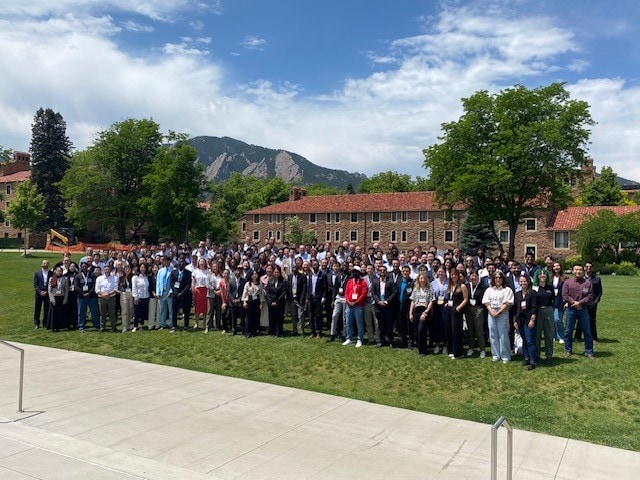
[Image above] Credit: Lawrence Livermore National Laboratory; YouTube
ACerS Glass & Optical Materials Division (GOMD) is leading an initiative to encourage glass researchers to show off their work in a 5–8-minute video. Links to the videos are curated on the GOMD webpage for convenient viewing.
GOMD chair Edgar Zanotto has put out a call for videos in his video below:

Zanotto has asked glass researchers in academia and the corporate world to share their research and innovations in a short video. Below are video submissions from various GOMD members.
Schott Research & Development is making the world’s thinnest glass that can be rolled up like a roll of tape. The company also is creating nanoscale materials with new properties that will pave the way for novel applications of innovative nanomaterials.
At its Innovation Center, Owens-Illinois has replicated a manufacturing plant and is developing new technologies and processes for melting and forming glass, evaluating existing production technologies, and expanding prototype innovations.
With 40 years of research experience, LaMaV’s Center for Research, Technology and Education in Vitreous Materials (CeRTEV) boasts a pilot-scale glass melting furnace that melts up to 7 kilograms of glass, a viscometer, 16 heat treatment furnaces, and other cool (or hot?) equipment.
The Optics and Materials Science & Technology (OMST) organization at Lawrence Livermore National Laboratory is currently working to create the world’s most damage-resistant optics and conducting research for other innovations in areas of bulk materials, laser–matter interactions, and chemical and laser post-processing.
Ohio University is studying silver-alloyed versions of phase change memories, which could possibly improve memory in our electronic devices.
Did you know that bioactive glass could play a role in stimulating the healing process for broken bones? Imperial College London researchers are developing solutions for regenerative medicine.
Researchers at the University of Tennessee Space Institute focus their research primarily on fluoride glass and have several opportunities for collaboration.
At Iowa State University, the Glass and Optical Materials group is conducting research on sulfide glasses. Did you know that sulfide glass, used in night vision cameras and goggles, is better at transmitting infrared light than oxide glass?
“The videos will attract research students, post-docs, and researchers from other communities (physics, chemistry, computer science, mathematics, statistics, medical/dental sciences, etc.) for collaborative work,” Zanotto wrote in a recent email.
“It will also help with university outreach efforts and help advertise (promote) the research group to potential sponsors, industries, and funding agencies,” he added.
Take a look at the videos from the links above and learn all about the fascinating things glass researchers are doing!
Author
Faye Oney
Spotlight Categories
- Division News
Divisions
- Glass & Optical Materials


